Going on holidays is as much about getting away from the banal as it is about chasing the novel. And while there are familiar sights in Poland, it’s an often overlooked destination for something different.
I’m visiting Gdańsk for the weekend. With a population of about half a million people, it’s not only Poland’s largest port city, but also one of its most beautiful. For centuries Gdańsk has been a wealthy trading hub, and its streets are famed for their medieval architecture: in the 17th century, it was the jewel of the Hanseatic League, a collective of Baltic ports that enriched the merchants of Gdańsk.
My tour guide for the weekend is Marta Ruszkiewicz, an enthusiastic local with an encyclopaedic knowledge of her home place. She meets me at my hotel, Dwór Uphagena, a former 19th-century hospital cleverly reimagined and refurbished by the Arche Group hotel chain.
In the lobby of the hotel, there’s a money donation box bearing a sign that I roughly translate as “Solidarity with Ukraine”. The war is much closer here: in fact, Gdańsk is just across the bay from Russian soil. Kaliningrad is where Russia stations its Baltic fleet.
RM Block
Are locals worried about the proximity to a state that recently invaded its neighbour? One taxi driver tells me locals aren’t fazed. In the past, he said, people used to cross the border and buy cheap petrol, but that’s harder to do now. I put the same question to Ruszkiewicz. “It’s said that it’s worth going to Kaliningrad to know it’s not worth going to Kaliningrad,” she jokes. I drop the subject.
We stroll into the centre of Gdańsk and admire the buildings. Długa Street, which connects the city’s Golden Gate and Long Market, is astonishing. It is swarming with tourists – many of whom are domestic, German or Scandinavian. I’m amazed by how picturesque the scene is, particularly as the area was ravaged by the second World War.
[ A weekend trip to Krakow, where history hums beneath the surfaceOpens in new window ]
“It was a miracle the Soviets allowed the Polish people to rebuild a German city,” says Ruszkiewicz. (The city’s history is complicated: it has had eras of Polish, German and self-rule. Before the war, Gdańsk was primarily occupied by German speakers and known to them as Danzig.) We tour Uphagena House, which was restored to its prewar condition. Farther down the street we see a row of pastel-coloured buildings which I’m told are merely facades to modern interiors. Still, the reconstruction efforts are admirable.
We stop by the elegant Artus Court, a building that used to be a meeting place for the merchant classes, and where Machiavellian intrigue thrived. Today it’s a branch of the Gdańsk History Museum as well as a popular tourist destination, as is St Mary’s Church, which stands tall above the city centre. It was built in 1502 and is the largest brick church in the world and among the largest in the gothic style. Inside it’s almost entirely white, and rather bare for a Catholic church. In the mid-16th century, when Martin Luther’s reformation took hold across Europe, the local Protestants painted over ornate frescoes and claimed it as their own.
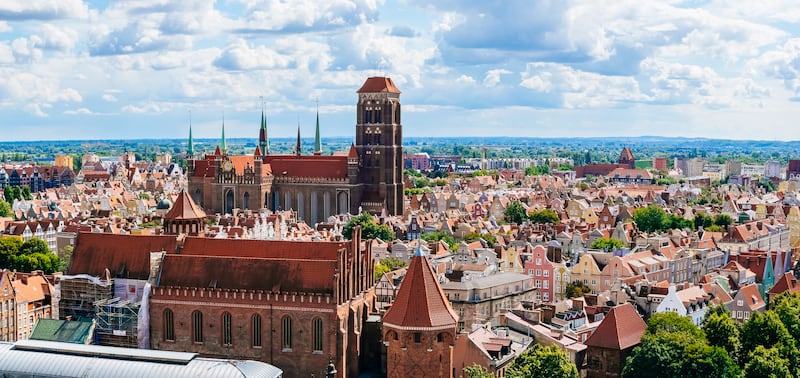
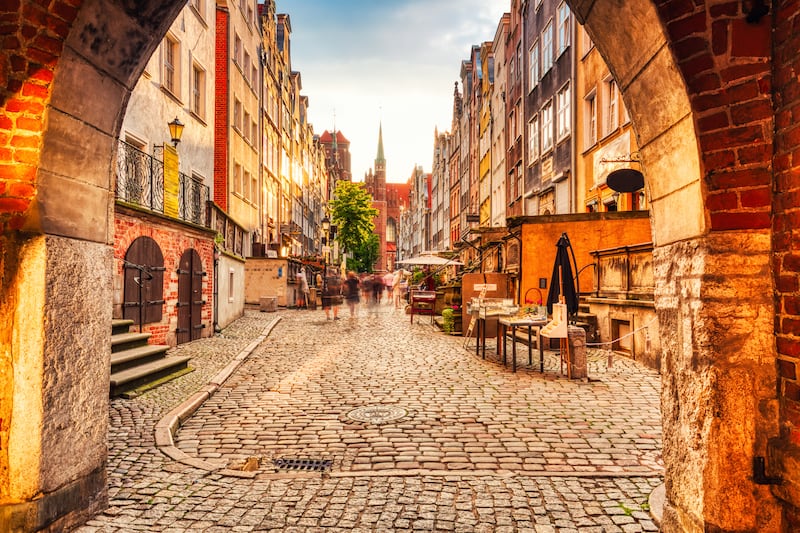
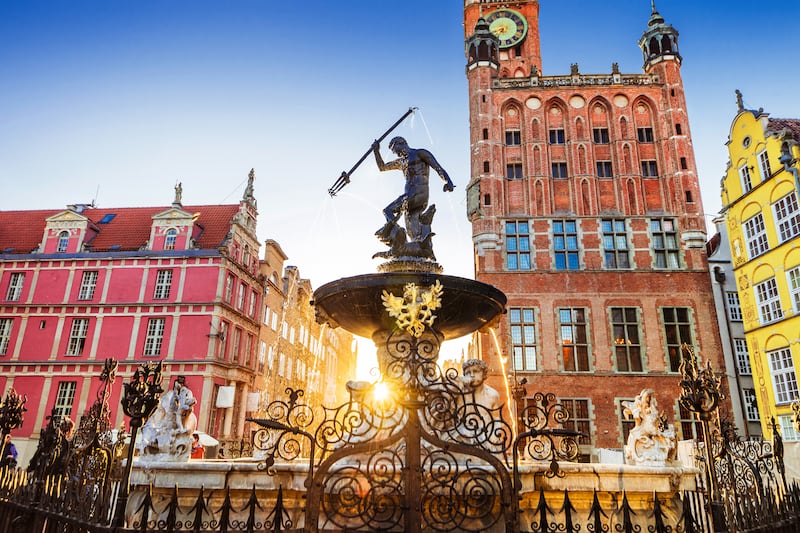
Nearby is St Mary’s Church Street – better known colloquially as Amber Street. Gdańsk is the world capital for amber, which can be found washed up on beaches in the area, and Amber Street is ground zero for picking out a gift for Mammy back home. Nowadays amber is more commonly found in mines in Kaliningrad, but Gdańsk retains a dedicated tradition of moulding the rock into all sorts of ornaments and jewellery.
At Piwnica Rajcow on Long Market, I pop in for sausage and egg soup, duck dumplings and a tasting set of locally brewed beers. Alongside diners is a wall of fermentation vessels. It can sometimes be difficult to tell if you’re in a tourist trap when abroad, and occasionally what is pushed as “traditional” isn’t at all representative of what the locals consume. In this case, however, I couldn’t care less: it is tasty regardless.
[ Welcome to my place . . . GdanskOpens in new window ]
Near my hotel is a greenway along the old city bastions, which serves as an oasis away from the busy city. To start my second day, I find a nice spot on a bench and take it all in before venturing into the crowds. I hear the buzzing of cicadas in the bushes, swans honk and waddle by the riverbank, and there’s a distant hum of a construction generator.
We catch a bus to Westerplatte peninsula, north of Gdańsk. This is a pilgrimage of sorts for those learning about the heroism of Poland’s soldiers during the second World War. Between the first and second World War, Gdańsk was a “free city”, and enjoyed imports into Poland and Germany. However, Poland wanted its own military port to prepare for a potential invasion from the Bolsheviks to the east, and so Westerplatte was used officially by 88 soldiers for arms imports and production. As Nazi Germany posed a threat, this number was secretly bolstered to more than 200 in the 1930s.
On September 1st, 1939, Westerplatte became the site of the first battle of the second World War. A Nazi gunship opened fire at 4.45am, and soldiers poured in, only to be met by a fierce and unexpected defence. The Polish defenders lasted seven days against a force three times their size before eventually surrendering. Many lived until the end of the war, and the last man died in 2012. With the rubble of old depots, bunkers and a newly constructed memorial, the site is a reminder of Polish resistance – a far cry from the German seaside resort of the 19th century.
At the tip of the peninsula stands an artificial hill capped by an imposing Soviet monument. My guide’s father served in the army in the 1960s, and was among those who created the hill. It is littered with Soviet propaganda. Nice view, though.
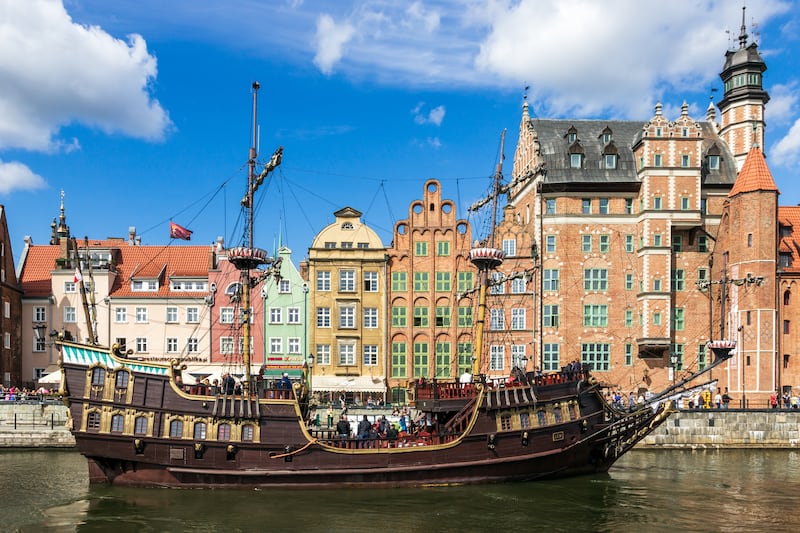
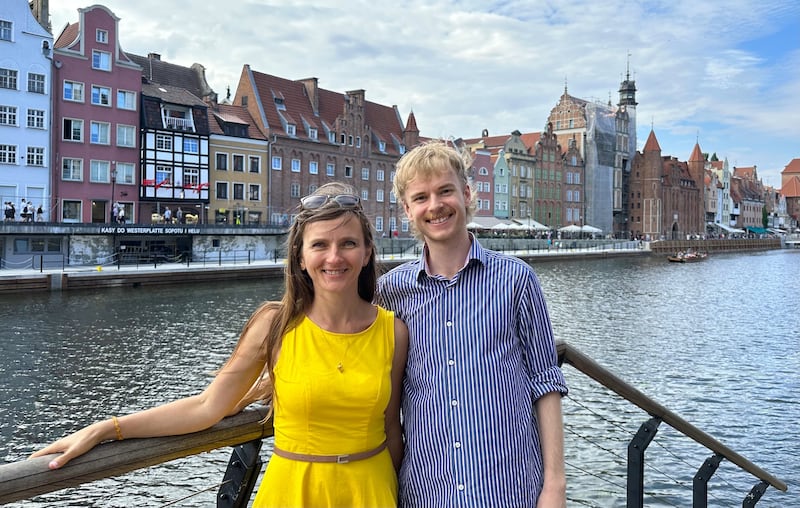
To get to our next destination, we board the Galeon Lew, a 17th century-style ship that loops tourists to and from the city. Along the way we pass shipping containers, mounds of coal, a medieval fortress and a digger scrunching up scrap metal like a scene from Wall-E. At this point it’s clear we’re not in Rome or Venice, but the trip is worth it for the old city. I had few preconceptions coming here, but I was pleasantly surprised at the city’s canny approach to preserving areas of historical importance, while also keeping a focus on functionality.
As the ship approaches the dock, a man plays a slightly-out-of-tune guitar over loudspeakers. It’s about as great as you would expect from a tourist river cruise, but the vibes are nice. Ruszkiewicz tells me our Polish troubadour – who looks rather like Popeye – has said he will play an Irish song. A few bars of Whiskey in the Jar later and I search for my life jacket. The captain looks unbothered for what I expect is the thousandth time he’s heard it this summer. Maybe he has ear plugs in?
Our next stop is the Museum of the second World War, which opened in 2017. It is by far the best of its kind I’ve ever been to. Not only is the building an architectural marvel and the collection all-encompassing – but the narrative portrayed is complete and unflinching. Like any war museum, it’s not for the faint-hearted, but in its innovative multimedia presentation it demands you do not look away. One Polish street is re-created as it was just before the war, like walking into Harry Potter’s Diagon Alley at Warner Bros studios, but it’s the subsequent iteration that breaks your heart: the same street is portrayed after the war, demolished with a Russian tank in the centre.
On my final day, Ruszkiewicz and I catch a taxi to the forested hills above the nearby seaside spa town of Sopot. We go for a brief hike in the woods before taking a pedestrian path towards the sea. It’s a popular walk for those attending Opera Lesna amphitheatre (Forest Opera), which was built in the early 20th century, harnessing the location’s unique natural acoustics.
Sopot is the Polish capital of seaside getaways and is also popular for stag and hen parties. There are some hills there suitable for skiing in winter: Gdańsk and Sopot are at about the same latitude as Belfast, but the climate is unrecognisable from Ireland’s, with hot summers and freezing winters. They don’t call it Baltic for nothing. I try some local white wine at Endi Wine House in the centre of Sopot, but it only reinforces my belief that they should stick to the beer.
Sopot has several historical bath houses – one dating from the 1820s – that utilise natural mineral water from the area. Although it’s slightly salty, my guide says people drink it in small portions for medicinal purposes. I drink some at a public fountain, promptly spit it out, and turn to see her laughing.
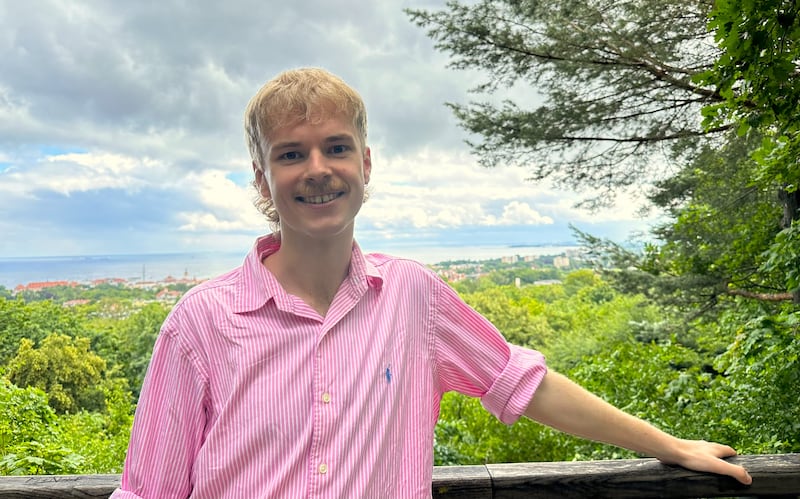
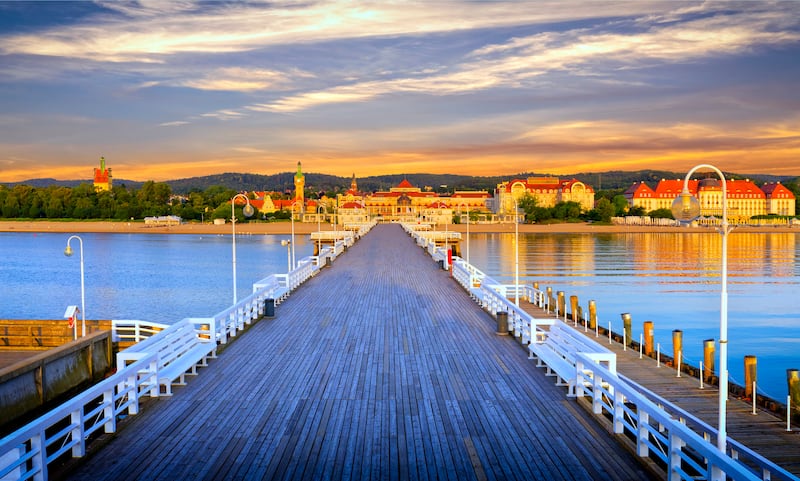
The town’s main attraction is its long sandy beaches with Europe’s longest wooden pier in the middle. Along the beachside walk, pensioners sit and play chess, a woman offers tarot card readings and in the main square there is swing dancing in front of a live band. Kids stand on their parents’ shoes, oldies in fedoras relive how it used to be and one young couple knock it out of the park in their black-tie getup. Good vibes all round. I try some Polish mead and a traditional Wuzetka cake. (Chef’s kiss.)
In among the merry-go-round and food markets, they still have pesky seagulls just like home. Even in paradise, there’s no escaping them.
Direct flights operate from Dublin, Cork and Belfast to Gdańsk. Conor Capplis was a guest of the Polish National Tourist Office. Marta Ruszkiewicz is available for tours and can be reached at gdansktourguide@gmail.com





















